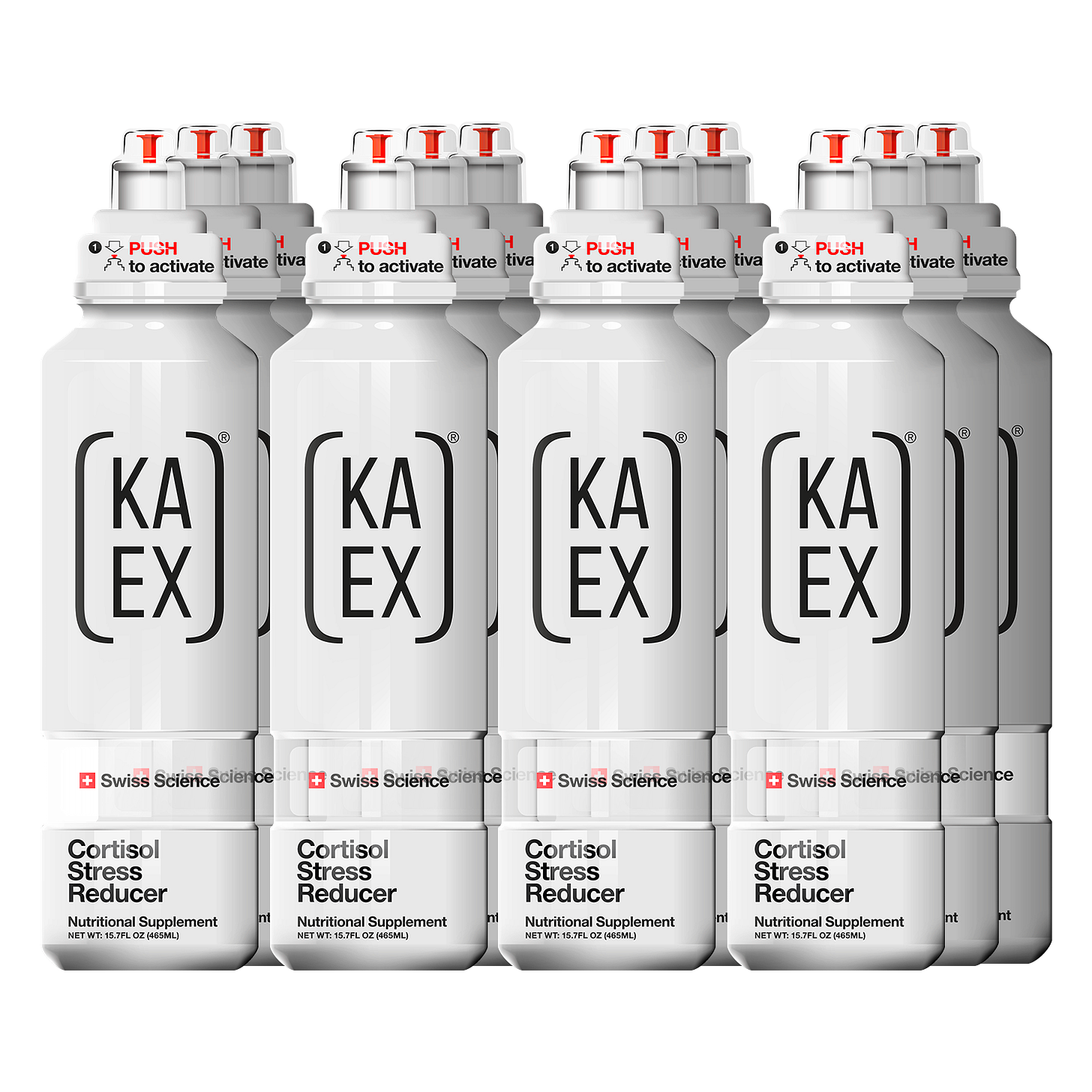With Fitness, Sometimes The Inverse Of An Old Axiom Is True
Results in fitness may come from the mind first, then manifest in reality.

If you’re struggling to take the next leap in your health and wellness,
Whether that’s running a marathon, changing an aspect of your physique, lifting a weight you’ve never lifted before, or back bending into a new level of flexibility, here’s something I’d like for you to take with you.
Before I leave for vacation, though…
KA-EX is the first energy drink of its kind to REDUCE cortisol, not raise it.
I’ve partnered with them to offer 20% off your first wellness welcome box, where you’ll receive samples of the electrolyte mix and shaker bottles to get you started on optimizing your nutrition and driving down your stress.
I recommend drinking it in the afternoon, or after your hardest workouts, to see the best benefits in recovery and sleep.
Now, back to the good stuff.
I’ve been thinking a lot recently about why people disagree on what moves the needle forward generally in life, especially after recent events.
This tweet from
comes to mind from a month ago:From a fitness lens, I see this far too often.
Disagreements about the best ways to lose fat, increase lifespan, build muscle, improve performance could be pulled from the annals of the internet as nauseam.
For every compelling argument about why you should eliminate processed foods from your diet, there’s a 95 year old woman living in rural America somewhere who drinks a Dr. Pepper daily.
That’s why when you try to talk to someone who has a different view — however they came upon it — about health, it’s usually met with resistance.
Health and fitness (and nutrition) might arguably be the cultiest industries because of the strong beliefs each tribe harbors.
All it takes is one success story and a coercive storyteller for a belief system to be changed.
And when your belief system changes, it may be the thing that drives the most poignant (but not always “positive” or “healthy”) results.
Seeing is Believing? Or…
This response to Gurwinder’s tweet is what, in my experience, proves true time and time again — sometimes, you have to believe it to see it, not see it to believe it.
In 2023, I had a client who started working with me with the goal of losing weight. I’ve spoken about this client in previous newsletters.
What ultimately supplemented her progress was not just consistent strength training and nutritional habits, but running.
Most experts in the running community would advise against using running as a weight loss tool. And I might in most cases as well.
In this instance, my client accelerated her results by building running into her routine.
Quickly, she saw that her weight loss sped up, and a nice byproduct was her development of a love for running.
Had I taken the “safe” stance and discouraged it — since she’d never run much before — she might’ve lost her belief in consistent movement as a lever for driving change in her physique.
But believing that running was changing her body allowed her to see the results she wanted. It’s a bonus that she’s got a lifelong habit to fall back on when the inevitable ruts of life come.
In another example, a client of mine who started earlier this year began working with me at the recommendation of a friend.
She brought with her to our training sessions a lot of hesitancy, and even skepticism, that someone of her age (50) could lose weight with weekly strength training.
She felt her current routine, even after the addition of more movement, didn’t lend itself to dramatic improvement.
This example of success in belief, in her defense, is also largely credited to her therapist.
I insisted that what she had to do was “trust the process,” continue to show up, and that despite her need to see large progressions to feel like things were working, patience would teach her the incremental nature of good health improvements.
But in a conversation with her therapist, she revealed she’d never seen women in her family make the changes that she was looking to make.
In many ways, that revelation allowed her to radically change her belief system:
“I may not have seen my family members succeed in all their health goals. That doesn’t mean I can’t be the first.”*
*This is a paraphrasing/my guess of what the conversation/belief actually looked like.
After changing that belief about herself, she shows up with more vigor, more willingness and most importantly, more trust.
After months of stagnancy, she’s now down 10 lbs in the past 90 days.
These two examples of belief as a lever for driving change that is visible turns the old axiom of “seeing is believing” on its head.
It’s an important distinction that I think people who are struggling with “locking in” should recognize.
Many self-help books will tell you this rudimentary advice, “it all starts in the mind.”
Usually it stops there.
Believing to see requires a creative nudge, and probably some outside feedback, to identify what about your current belief system is holding you back and what new belief system can most effectively make the change you want.
The intellectually adept might stumble upon this realization without a coach.
Many who are just as smart may still need one, though.
You know where to find me.






